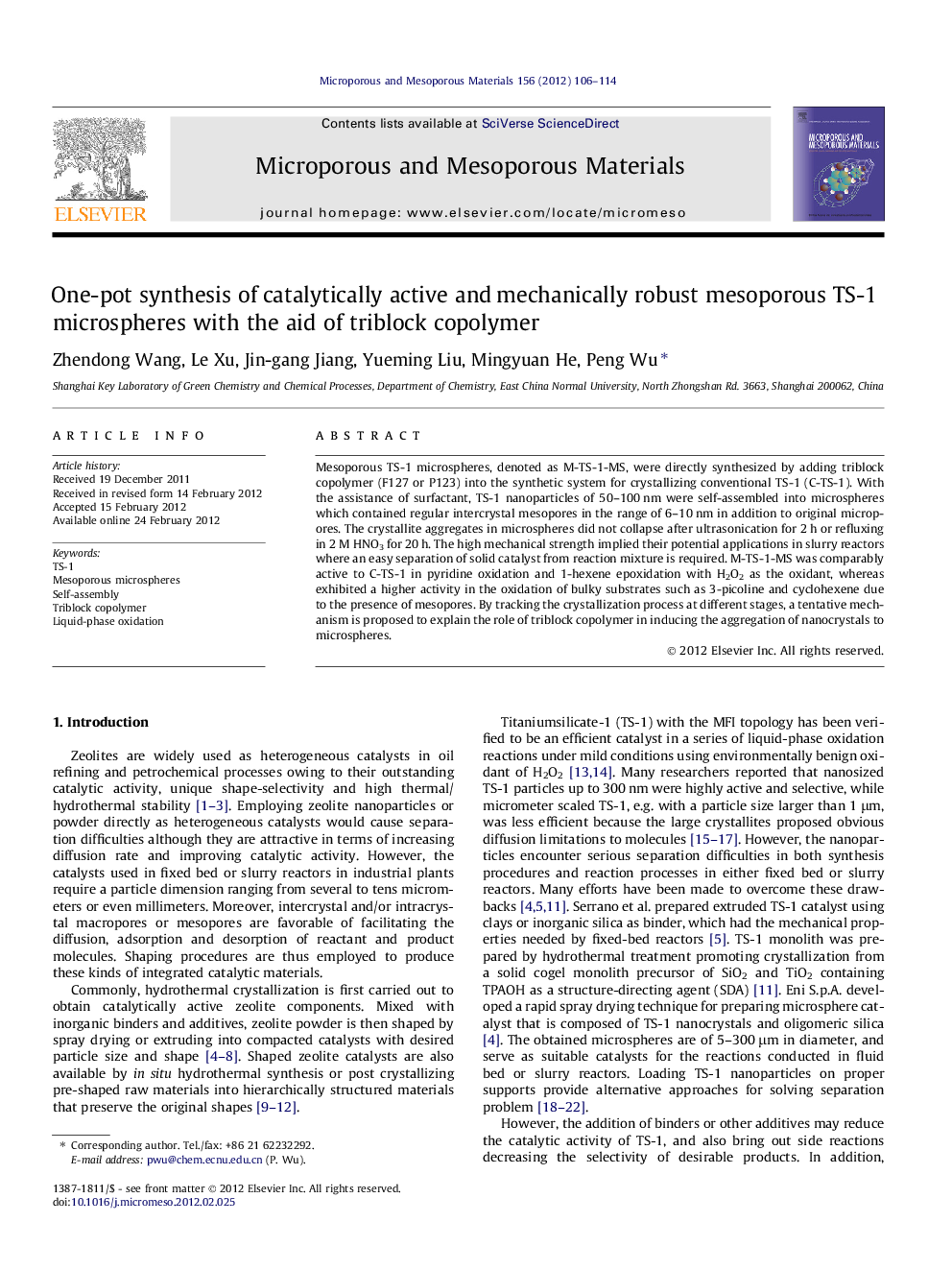| Article ID | Journal | Published Year | Pages | File Type |
|---|---|---|---|---|
| 74219 | Microporous and Mesoporous Materials | 2012 | 9 Pages |
Mesoporous TS-1 microspheres, denoted as M-TS-1-MS, were directly synthesized by adding triblock copolymer (F127 or P123) into the synthetic system for crystallizing conventional TS-1 (C-TS-1). With the assistance of surfactant, TS-1 nanoparticles of 50–100 nm were self-assembled into microspheres which contained regular intercrystal mesopores in the range of 6–10 nm in addition to original micropores. The crystallite aggregates in microspheres did not collapse after ultrasonication for 2 h or refluxing in 2 M HNO3 for 20 h. The high mechanical strength implied their potential applications in slurry reactors where an easy separation of solid catalyst from reaction mixture is required. M-TS-1-MS was comparably active to C-TS-1 in pyridine oxidation and 1-hexene epoxidation with H2O2 as the oxidant, whereas exhibited a higher activity in the oxidation of bulky substrates such as 3-picoline and cyclohexene due to the presence of mesopores. By tracking the crystallization process at different stages, a tentative mechanism is proposed to explain the role of triblock copolymer in inducing the aggregation of nanocrystals to microspheres.
Graphical abstractFigure optionsDownload full-size imageDownload as PowerPoint slideHighlights► Mesoporous TS-1 microspheres were prepared via self-assembling of nanocrystals with the aid of triblock copolymer. ► A tentative mechanism is proposed for the assembling of TS-1 nanocrystals. ► TS-1 microsphere is mechanically robust and catalytically active to liquid-phase oxidations.
